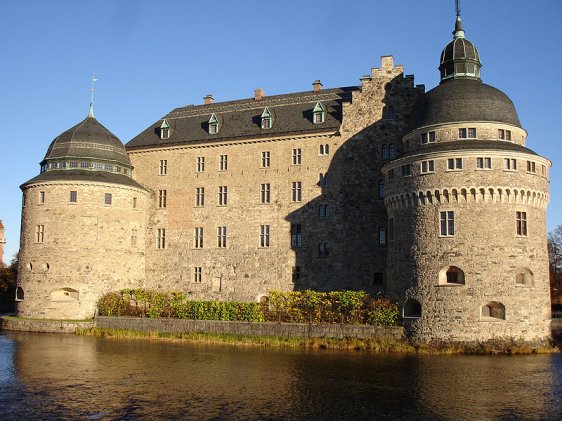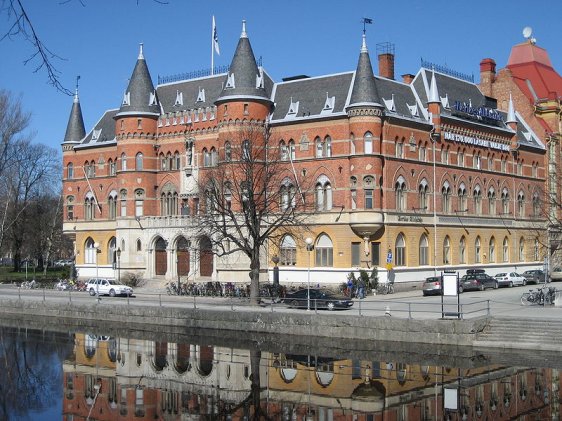Örebro is a city in Örebro County, in central southern Sweden. It covers 42.96 sq km (16.6 sq mi) and has a population of 107,000 (2011 estimate).
As with many towns in Sweden that were built mostly nof wood, Örebro suffered a major fire. The blaze of 1854 destroyed most of the old buildings that are not built of bricks. What we see today dates from after that fire.
Sights & Attractions in Örebro
- Karlslunds Herrgård
This royal estate was once a self-sustaining community. It has a manor house built in 1804-09, buildings for artisans and craftspeople and the oldest working power station in Sweden. - Landstingsmuseet
Medical museum showcasing the history of healthcare. it is housed in an 18th century hospital building in northern Örebro. - Rådhuset
The Örebro Town Hall, completed in 1963, is a magnificent Neo-Gothic building. It has a clock with automatons showing the city's history. - St. Nicolai Kyrka
The Church of St. Nicholas was established in the 13th century, but has undergone repeated restyling over the century. - Svampen
The mushroom-shaped water tower of Örebro, completed in 1958, is today the icon of the city. Visitors can enjoy a panoramic view from the top. - Wadköping
This is the lovely riverside promenade along the Svartån, with views of the city's wooden houses. - Örebro Läns Museum
This is the oldest county museum in Sweden, although most of the displays are in the building opened in the 1960s. - Örebro Slott
The town castle has been around since the 13th century. It has witnessed many historical events and survived the big fire that destroyed the town.
 The stream Älvtomtabäcken in Rosta, Örebro, Sweden
The stream Älvtomtabäcken in Rosta, Örebro, SwedenSource: https://commons.wikimedia.org/wiki/File:Alvtomtabacken_rosta_orebro_sweden_20110423.jpg
Author: Jörgen Nilsson

Örebro itself has been around for over 750 years. Its name, which means "bridge over gravel banks", was first mentioned in print in the 13th century. The town received its Royal Charter and city status in 1404.
Today visitors to Örebro can delight in its medieval buildings. Two landmarks dominating the city are the Örebro castle and the St Nicolai Kyrka. The Svartån River flows through Örebro. Its riverside promenade allows visitors to discover the city on foot or by boat.
 Örebro Slott, the town castle
Örebro Slott, the town castleSource: https://commons.wikimedia.org/wiki/File:%C3%96rebro_castle_in_Sweden.jpg
Author: sk12

Örebro experiences a humid continental climate moderated by the Gulf Stream and the proximity of lakes. The warmest months here are July and August, when the average high temperature reaches 22°C (72°F). Coldest months are January and February, when the average low temperature drops to -4°C (25°F). July is the wettest month of the year, receiving 94 mm (3.7 in) of rain.
Visiting Örebro
There are flight to Örebro from Stockholm, Copenhagen and Malmö. Allehandaborgen, Örebro
Allehandaborgen, ÖrebroSource: https://commons.wikimedia.org/wiki/File:Allehandaborgen.jpg
Author: Sebastian F

 Latest updates on Penang Travel Tips
Latest updates on Penang Travel Tips

Copyright © 2003-2025 Timothy Tye. All Rights Reserved.

 Go Back
Go Back